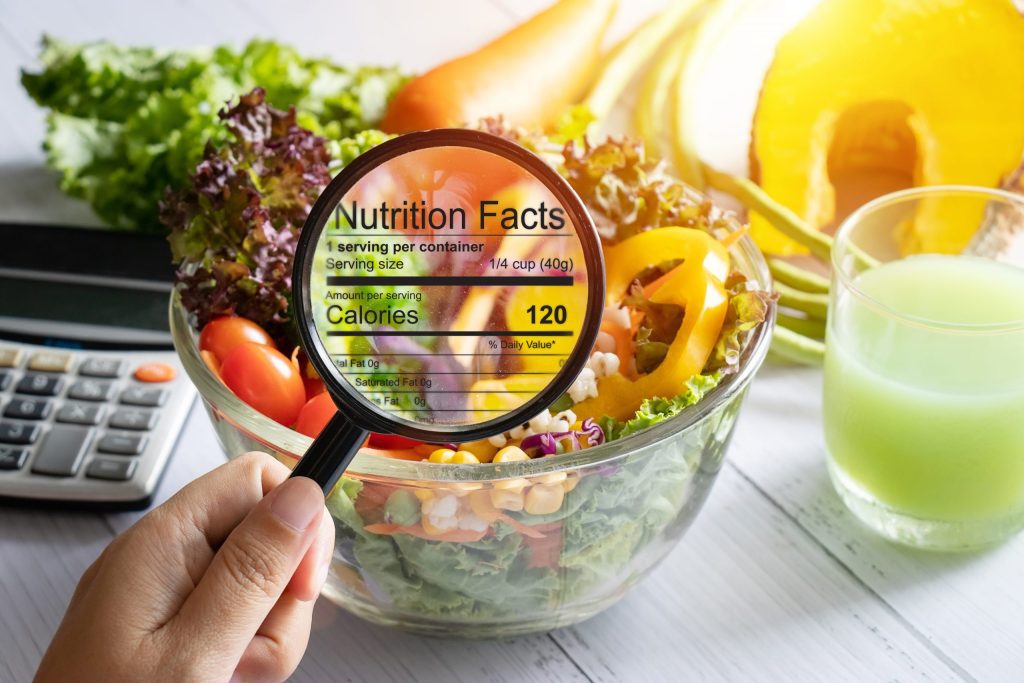An Update on Nutrition Labeling
August 2, 2020 | 8 min to read
Nutrition labeling significantly impacts consumer choices and industry standards, as highlighted in a report by the *American Journal of Preventative Medicine*. The FDA’s redesigned Nutrition Facts label, effective for many manufacturers as of January 2020, aims to promote healthier decisions by clearly displaying crucial nutrient information. Experts like Steve Zoller and Melissa Grzybowski emphasize its role in consumer education and safety, ensuring that essential ingredients and allergen details are transparent for optimal health and wellbeing.

Nutrition labeling can make a difference. According to a December 2018 American Journal of Preventative Medicine report, from reviewing 60 intervention studies, food labeling reduces consumer dietary intake of selected nutrients and influences industry practices to reduce product contents of sodium and artificial trans-fat.
Steve Zoller, owner of Food Label Consultants LLC in Mount Morris, NY, has been a label consultant for more than 50 years and dealt with government compliance issues back in the ‘80s.
“I became involved with food label nutritional facts since these were first required in ‘92 as an act of Congress,” he says. “The second implementation was proposed in 2014 during the Obama administration, when First Lady Michelle Obama introduced it.”
It was on May 27, 2016, when the FDA published final rules on the new Nutrition Facts label for packaged foods to reflect new scientific information, including the link between diet and chronic diseases such as obesity and heart disease. The ultimate goal of the redesigned label was to make it easier for consumers to make healthier food choices.
Currently, these labels are required to list 15 nutrients. With the exception of calories, total fat, sodium, total carbs and protein, the other 10 nutrients need to be declared unless they are 1% or less of the daily value.
Manufacturers with $10 million or more in annual sales were required to switch to the new label by January 1, 2020; manufacturers with less than $10 million in annual food sales have until January 1, 2021 to comply.
“With the new label, there is now a calorie figure that can be read from 4 feet away,” says Zoller. “Manufacturers can’t make a healthy claim unless a product is low in fat.”
The Importance & Purpose
Changes to nutrition labels have been gradual, as additional time is needed for consumers and the industry to submit comments for review.
“The FDA’s goal [with nutrition labeling] is for consumer education,” says Melissa Grzybowski, U.S. regulatory and nutrition specialist at Food Consulting Co., Del Mar, CA, which develops FDA-compliant label components and reviews clients’ existing labels to ensure compliance with U.S. food label regulations. “It gives consumers the information to make healthy food choices.”
According to Jessica Austin, training and education manager at Registrar Corp., a provider of FDA compliance assistance based in Hampton, VA, food labeling helps to ensure that safety standards are maintained and consumers are informed.
“Listing ingredients, nutritional values and allergens are all essential in trying to maintain consumers’ health and safety,” says Austin.
Washington, D.C.-based Prime Label Consultants has worked with a number of supermarkets to understand the difference between packaged food nutrition facts panels and those that just require calorie labeling, such as foodservice products.
“It’s a case-by-case determination,” says Jesse Zuehlke, Prime Label Consultants’ general manager. “You can’t always determine labeling requirements on the product itself, as it depends on how it’s presented and sold to customers.”
For example, a block of cheese sold in a full-service deli case may require a different nutrition facts panel from a prepackaged brick of cheese.

In the Deli
Grab-and-go foods typically fall under one of two categories—those that will require a nutrition facts chart and other nutrition labeling typically required for packaged food (generally for granola bars, bottled beverages, candy bars, etc.) or those exempt from the general nutrition labeling (self-service foods, such as prepared sandwiches or sushi).
“The FDA provides a number of options for providing calorie information for these products,” says Austin. “For example, a company could place a sticker directly on the prepared food’s package or choose to display a sign next to their prepared offerings that displays the calories.”
Because supermarket delis are regulated similar to restaurants, these departments must be aware of multiple types of labeling requirements.
“Delis may offer ready-to-eat food such as wings or pasta salads behind the counter for which the deli may need to display caloric information on the menu,” says Austin. “However, cold meats sliced behind the deli counter at a grocery store would not be subject to the same requirement, as it is understood the customer will take the meats home and further prepare them. Delis may also offer grab-and-go, pre-packaged products like jams or beverages that would be required to bear the nutrition facts panel on the labeling.”
The requirements for a specific deli will depend on their size as well as how frequently their food offerings change. In addition, nutrition labeling for private labeled packaged foods are the same as for branded lines.
“Packaged food product sold in retail is subject to FDA nutrition fact panel regulations, so many products sold in the deli fall under these criteria,” says Zuehlke. “The information for these products is different than the core requirements for menu labeling.”
Menu labeling is required for all establishments selling food, and the list differs slightly.
“For example, instead of listing vitamin D and potassium, vitamins C and A are included,” says Zuehlke.
Communication between the store and supplier are key to ensure the method of how food is being sold is clearly conveyed.
“There may not be as much ingredient control with food prepared in the deli,” says Zuehlke.
There have been updates. Until recently, grab-and-go deli food labeling was not clearly defined.
“Now, the FDA has done a good job defining this category, calling it ‘foods on display’,” says Grzybowski. “For chains with 20 or more locations, these items, which fall under the restaurant labeling requirements, have to have calorie information communicated with signage by the items or a sticker on the packaging.”
As for who is responsible for labeling, according to the FDA, it’s the company listed as the distributor of the product.
“If I’m a meat supplier packing for [a company that’s distributing or selling the product], from what I’ve seen, both parties can sometimes be held liable [if there’s an issue],” says Grzybowski. “This includes the company making the product and whoever is listed on the label as the distributor. However, there are typically legal contracts between the two companies detailing who is liable for what.”
Recent Developments
Fairly recently, certain restaurants and similar establishments were required to start displaying calorie information on menus and ready-to-eat, grab-and-go food packaging.
“Before this, customers had virtually no way to understand the calories and health factors of their food choices when eating out at most restaurants,” says Austin. “According to the Food Network, Americans eat nearly 20% of their meals outside of their home, a substantial amount to not be aware of what they are putting into their bodies.”
Packaged food is undergoing labeling changes, as mentioned earlier, with the FDA requiring enlarged calorie and serving size fonts, declaration of added sugars and updated daily values passed on January 1 of this year.
COVID has also led to a temporary change in FDA’s enforcement of labeling regulations. The administration announced it’s providing flexibility for manufacturers to use existing labels, without making otherwise required changes, when making minor formula adjustments due to unforeseen shortages or supply chain disruptions brought about by the COVID-19 pandemic. These temporary regulations are intended to help reduce the impact of the virus on the supply chain and provide flexibility during these unprecedented times.
“Another page for regulations and standards is on the way, and we have a nutrition innovation strategy website that provides insight on what the FDA is working on now,” says Grzybowski. “With COVID, there is lots of information specifically on menu label requirements for restaurants that can no longer have customers inside. They are easing enforcements right now. The FDA also is being more lenient for packaged products that need to substitute ingredients based on supply issues, as long as it’s not an allergen issue or a drastic change.”
At press time, there were conflicts between the new and old rules in terms of nutrients.
“It’s a minor difference in serving size,” says Zuehlke. “There is a transition to the new nutrition panel through nutrition reform and seeing how consumers react to calorie numbers, sugars and serving sizes. There also will be bioengineered ingredient disclosures with the USDA’s new rule, which goes into effect in 2022.”
The FDA has made adjustments on what can be called ‘healthy’, but this was only a guidance document at press time; the administration hadn’t issued a code yet to finalize it.
“With this change, fat daily values went up, fiber went up from 25g to 28g, carbs came down a little, micronutrients like calcium and potassium changed, and the formatting changed with the calories highlighted,” says Zoller. “One big change is added sugars, which is a new nutrient that’s required and wasn’t there before; now there is both total sugars and added sugars listed, although added sugars are always a part of total sugar.”
Unfortunately, the impetus is on consumers to wade through the false information on nutrition. And what muddies the waters further is the fact that small companies are not required to include nutrition facts on labels, as long as they don’t make claims about their products.
“Many specialty foods don’t have nutrition facts panels, which is within the law, but the reality is that many supermarket chains won’t take these products without the label,” says Zoller.
Although clarification to the rules has been requested by many, at press time, the FDA had not provided any.
“For example, if an international company is importing products into the U.S., is the $10 billion in sales requirement based on total sales or does it need to include imports?” says Zoller. “An FDA note came out late last year that, for the first six months of 2020, they would be in more of an advisory role than an enforcement role with larger companies’ labeling. This is because the administration realizes there will be companies with inventory this year [that won’t be compliant]. The most important thing will be paying attention to deadlines and staying in compliance.”
The impetus will be on retailers to ask distributors and manufacturers if and when they’re changing over to the new labels, but it will be their consumers who will be driving these inquiries. DB
4 of 9 article in DeliBusiness Aug/Sept 2020

